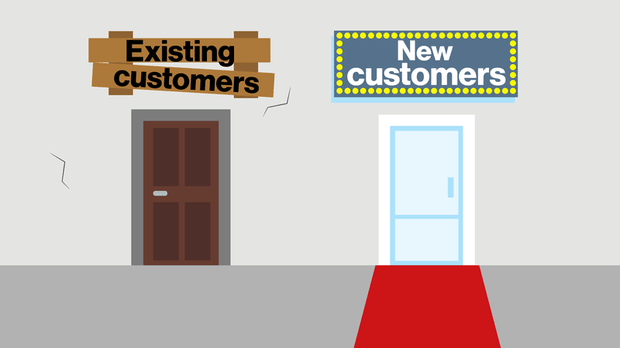To Sell Or To Serve?
Published: Mar 29, 2017
Author: Cary Cusumano
It was just over four years ago that I sat with great anticipation in the showroom of a local car dealership, signing the paperwork for a brand new car. It was a half hour after closing time, and they kept the place open “just for me” as I vacillated over various package deals. The sales staff were more than happy to help me envision myself in the driver’s seat. And they were equally accommodating in giving me a lengthy walkthrough of the vehicle when I picked it up. The car fulfilled – and continues to fulfill – all my expectations of quality and reliability that I associate with the brand.
And I will never buy another one from that dealer again.
The dealer had placed a great deal of thought into raising my awareness and helping me make my purchasing decision. But it did very little to ensure I received an equally enjoyable experience after the sale was closed.
My purchase included four years of free scheduled maintenance. So, each year, I dutifully returned to the dealership even though the experience was fair at best; and even though they made no effort to improve despite me giving them plenty of constructive feedback in surveys and in person. But hey, the service was free, right?
It wasn’t until the four years were up that I fully grasped the underlying pretext of those free services. That’s when I started to be bombarded with flyers, emails and phone calls telling me to take advantage of fantastic opportunities to upgrade to a new model. Unsurprisingly, I declined. After four years of mediocre service and having all my feedback ignored, the message I received was loud and clear: “we value your money a lot more than your loyalty.”
Sadly, that dealer isn’t alone. Too many businesses are solely focused on the sale. After the sale has closed, and billing has started, they don’t seem to have much interest in developing customer relationships. What’s paradoxical is that many of these businesses offer superior products, but fail to match it with anything approaching great customer service. If you’re selling me a great product, I expect service to match.
Listen to your customers
There’s an old adage, which holds especially true today, that it’s easier to sell to an existing customer than a new one. But customer loyalty isn’t just built by offering a “free scheduled service” — and certainly not by sending generic offers by email. You need to provide great customer experience at every point on the customer journey, from awareness, through sale and support, to renewal. To do that, you need to understand what your customers want. That means gathering their feedback at every touchpoint, taking it on board and then — and this is vital — acting on it. Don’t view customer complaints as an annoyance, as a customer lost. See them as a means of improving your business, developing customer relationships, and, ultimately, retaining more customers.
Don’t have time to read through all the feedback you receive from customers? Let artificial intelligence do it for you. Enhanced text analytics tools can take verbatim survey responses and spot the key trends, without getting caught out by semantics. They’ll understand when “your service was great, I loved every minute of it” was said sarcastically.
Tech can also help you check that appropriate actions are being taken. You can see who’s responsible for getting back to a customer and how long it took for a query to be resolved. The best CRMs give your frontline people a single dashboard view of every interaction with a customer. That means they can see whether a call for an upgrade is likely to be appreciated or not.
If you’re not in a position to make big changes to your customer service, at least respond to your customers. Even better if you can preempt their questions.
Don’t rely on a great product
To sell or to serve? We should never force our customers to choose between good products and good service. It’s both/and, not either/or. The business executive whose focus is consumed solely in how to sell more product without concern for the service model behind it is like a nightclub owner who relies on the club’s reputation for its great microbrews. Even as he stands each night at the front door of the club advertising his great beers, and offering discounts on the cover charge to draw more customers in, he’s puzzled by the fact his business is actually shrinking and not growing. What he doesn’t see is the customers going out the back door, disappointed by the bad atmosphere, the rude servers and the slow response.
And those customers are talking to their friends…
A 2016 CX Impact Award winner from the Customer Experience Professionals Association (CXPA), Cary Cusumano is a Customer Experience and Design Thinking practitioner in Verizon Enterprise Solutions. He is a Certified Customer Experience Professional (CCXP) and Certified Lean Six Sigma Black Belt.
You may also be interested in:
